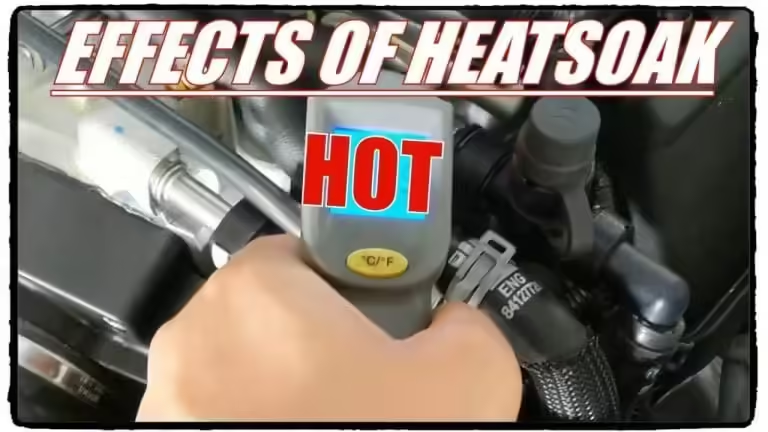
The effects of heat soak and HP
In this tech article with the help of CSP we are going to show you the effects of heat soak on the 6th Gen Camaro ZL1, this applies to any car fitted with a water to air intercooler.
Start watching the video at 2min 35sec.
Results from the video above
2min 55sec Dyno pull #1 the car makes 621rwhp with the 2.3″ pulley
4min 50sec Dyno pull #2 the car makes 639rwhp with the 2.5″ pulley
As explained in the video the installation of the larger 2.5″ pulley has slowed the blower RPM down which has resulted in a gain in peak HP.
Now with a different car with the same mods
5min 55sec Dyno pull #1 645rwhp with the 2.3″ pulley
7min 15sec Dyno pull #2 639rwhp with the 2.3″ pulley
7min 55sec Dyno pull #3 630rwhp with the 2.3″ pulley
9min 04sec Dyno pull #4 610rwhp with the 2.3″ pulley
As explained in the video the heat exchanger is being feed by the dyno fans with air however it simply isn’t efficient enough to remove the heat soak effects created from the blower as such this car has had a loss of 35rwhp over only 4 dyno pulls.
Andrew testing the interchiller ON vs OFF on his ZL1 Camaro
Start watching from 3min mark, Andrew is also testing the stock exhaust vs an aftermarket brand in the start of the video
Power runs:
With the chiller turned ON is 806rwhp
With the chiller turned OFF the power dropped off 30rwhp to 770rwhp
With the chiller turned back ON the power has now gained back to 799rwhp
Andrew has stated that this is a little conservative on the tune however we can clearly see the results shown here are what can be expected for HP losses without an interchiller.
What you also have to take into account on the first video is that whilst the smaller 2.3″ pulley spun the blower faster yet resulted in a HP loss vs the larger 2.5″ pulley which will spin the blower slower if this white ZL1 Camaro was fitted with an interchiller he would be able to get away with running the 2.3″ pulley and not have a loss of HP from over driving the blower even faster.
We typically see an improvement in efficiency from the colder denser air with the interchiller as such boost pressure is lowered by 1-2psi (this isn’t a loss of boost pressure) it’s a gain in efficiency (hot expanding air raising boost pressure vs colder denser air not expanding as much). Because of this colder denser air you are then able to step up a size in boost pulleys and/or run more ignition timing in the tune to create even more HP, as can be seen on Andrew’s black ZL1 with the chiller he is making a lot more HP with the safety of having colder intake temps and the ability to tune and simulate various intake temps so that the tune is adding and removing ignition timing vs all possible temperatures.
Quite often you will have a tuner say “I pull X-degree’s of ignition timing out at 140f (60c)” this temperature range and amount of timing the tuner has picked in his head, this is something he has had to guess as a safety measure to protect the engine.
However on the flip side the question is “Why are you pulling that much timing at that particular temperature?” With an interchiller you will tune and simulate these temperatures removing the guesswork of what amount of timing to pull and when to pull it from the tune, you then move into the area where you are only adding and removing the exact correct amount of timing that the engine actually wants, not what you think it wants. As you now have the ability to tune and simulate all possible intake temps over and over starting power runs at various intake temps and even repeating power runs at the same intake temp over and over until the tune is dialed in.
We hope this has given you a better understanding of how an interchiller system can not only gain HP, but make your tune and engine safer. If you have any questions at all please do not hesitate to reach out and ask.
